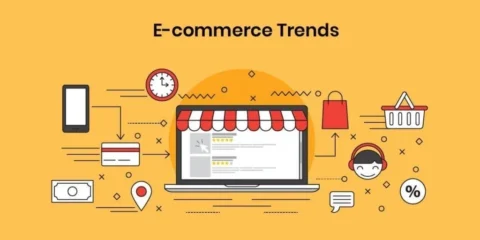Subscription-based business models have been gaining significant traction in the e-commerce industry over the last few years, and 2025 looks to be a pivotal year in this trend. From digital streaming services to curated product boxes, consumers are increasingly favoring subscription services that offer convenience, personalization, and flexibility. The growth of subscription models in e-commerce presents both new opportunities and challenges for businesses and consumers alike. In this article, we’ll explore the key trends driving the rise of subscription models in e-commerce, along with the potential opportunities for growth.
1. The Convenience Factor: Why Subscriptions Appeal to Consumers
One of the primary reasons subscription models are so attractive to consumers is the convenience they offer. With subscriptions, customers don’t have to worry about reordering products or remembering when it’s time to make a purchase. Whether it’s monthly deliveries of skincare products, meal kits, or curated fashion boxes, subscriptions help streamline the purchasing process and provide customers with the comfort of knowing their favorite products will always be delivered right to their doorstep.
Subscription-based services eliminate the need for constant decision-making and searching, creating an effortless shopping experience that appeals to time-constrained consumers.
2. Personalization Drives Engagement
As consumers demand more personalized experiences, subscription services have adapted by offering tailored options based on customer preferences. AI and machine learning technologies are helping businesses analyze customer data and deliver highly personalized products and services. For example, beauty subscription services like Ipsy or skincare brands like Curology offer personalized selections based on a customer’s specific skin type and concerns.
This level of personalization enhances customer satisfaction and loyalty, as individuals feel like they are receiving products specifically designed for them. As these technologies evolve, we can expect even more finely tuned subscription services that cater to niche markets, offering products and services suited to unique consumer needs.
3. Predictable Revenue Stream for Businesses
For businesses, the subscription model offers a more predictable and steady revenue stream compared to traditional retail models. With recurring payments, companies can better forecast their income and plan their inventory more efficiently. This financial stability also allows businesses to focus on enhancing customer experiences, improving product offerings, and scaling operations.
In addition, businesses with subscription models often benefit from higher customer lifetime value (CLV), as subscribers tend to stay loyal over time, especially if they feel the service provides consistent value. This predictability encourages brands to reinvest their resources into refining their subscription offerings, ensuring continued growth.
4. The Rise of Subscription Boxes
Subscription boxes are one of the most popular forms of subscription models in e-commerce. These curated boxes often focus on specific niches, such as beauty, fitness, or food, providing customers with a selection of products that align with their interests. The success of subscription box services such as Birchbox, FabFitFun, and SnackCrate has led to an explosion of niche market offerings.
Subscription boxes offer consumers the excitement of discovering new products each month while also catering to specific preferences. This model has become especially appealing in the age of discovery, where people are looking for unique and novel experiences.
5. Flexibility: Subscriptions Beyond the Traditional Model
While subscription boxes are a mainstay in e-commerce, the subscription model has evolved to become more flexible, moving beyond just physical products. Digital subscriptions such as streaming services (e.g., Netflix, Spotify) and online learning platforms (e.g., MasterClass, Coursera) have also seen exponential growth in recent years.
Services that offer flexibility, such as the ability to pause or skip subscriptions, change the frequency of deliveries, or adjust the product offerings, are becoming more popular. For instance, subscription services in the food and beverage sector, such as coffee or wine clubs, now offer a range of customization options, allowing users to select their preferences in terms of delivery frequency and product type.
6. Direct-to-Consumer (DTC) Subscription Models
The direct-to-consumer (DTC) subscription model is gaining momentum in e-commerce. By cutting out the middleman, brands can offer their subscription services directly to customers, which enhances brand loyalty and customer retention. DTC subscription businesses have the ability to create stronger customer relationships by offering personalized services and communicating directly with their audience.
DTC subscription models are growing across various industries, from lifestyle products to entertainment, offering businesses more control over their brand experience and greater profit margins. With consumers increasingly seeking authentic and direct interactions with brands, the DTC subscription model is positioned for continued success.
7. The Role of Social Media in Subscription Growth
Social media platforms are playing an essential role in the growth of subscription services. Platforms like Instagram and TikTok allow brands to target niche markets through targeted ads, influencer marketing, and organic content. With visual content and storytelling, subscription services can engage consumers and create emotional connections, which encourage subscriptions.
In addition, social media is a great way for brands to showcase the value of their subscription offerings, from the quality of products to the excitement of the unboxing experience. User-generated content, such as unboxing videos, helps build trust and credibility, further driving consumer interest and subscriptions.
8. The Subscription Economy and Consumer Expectations
As more businesses adopt subscription models, consumers have developed higher expectations in terms of value, service, and convenience. Subscribers now expect more than just discounts and product deliveries. They want flexibility, ease of use, and personalized experiences. The subscription economy is evolving as businesses continue to cater to these new demands, offering value-added services such as free shipping, exclusive content, or loyalty rewards.
Meeting consumer expectations in the subscription space will require businesses to invest in superior customer support, regular engagement, and continuously improving product offerings.
9. Challenges and Opportunities for E-Commerce Businesses
While the subscription model offers significant growth opportunities, businesses must also address the challenges that come with it. High customer acquisition costs, churn rates, and the need for continuous innovation can be obstacles. However, by leveraging customer data and offering incentives to reduce churn, companies can maintain long-term success in the subscription business.
Another key challenge is balancing personalization with privacy concerns. Consumers are more aware of how their data is used, and businesses must navigate these concerns while still delivering personalized experiences.
10. The Future of Subscription Models
The future of subscription models in e-commerce looks promising. With continuous advancements in AI, machine learning, and customer data analysis, businesses will be able to offer even more personalized and valuable subscription services. Subscription-based services will continue to expand into new markets, from digital services to physical products, offering endless opportunities for innovation.
As the subscription model evolves, businesses must stay adaptable and attuned to shifting consumer demands, ensuring they remain competitive in an increasingly crowded market.






